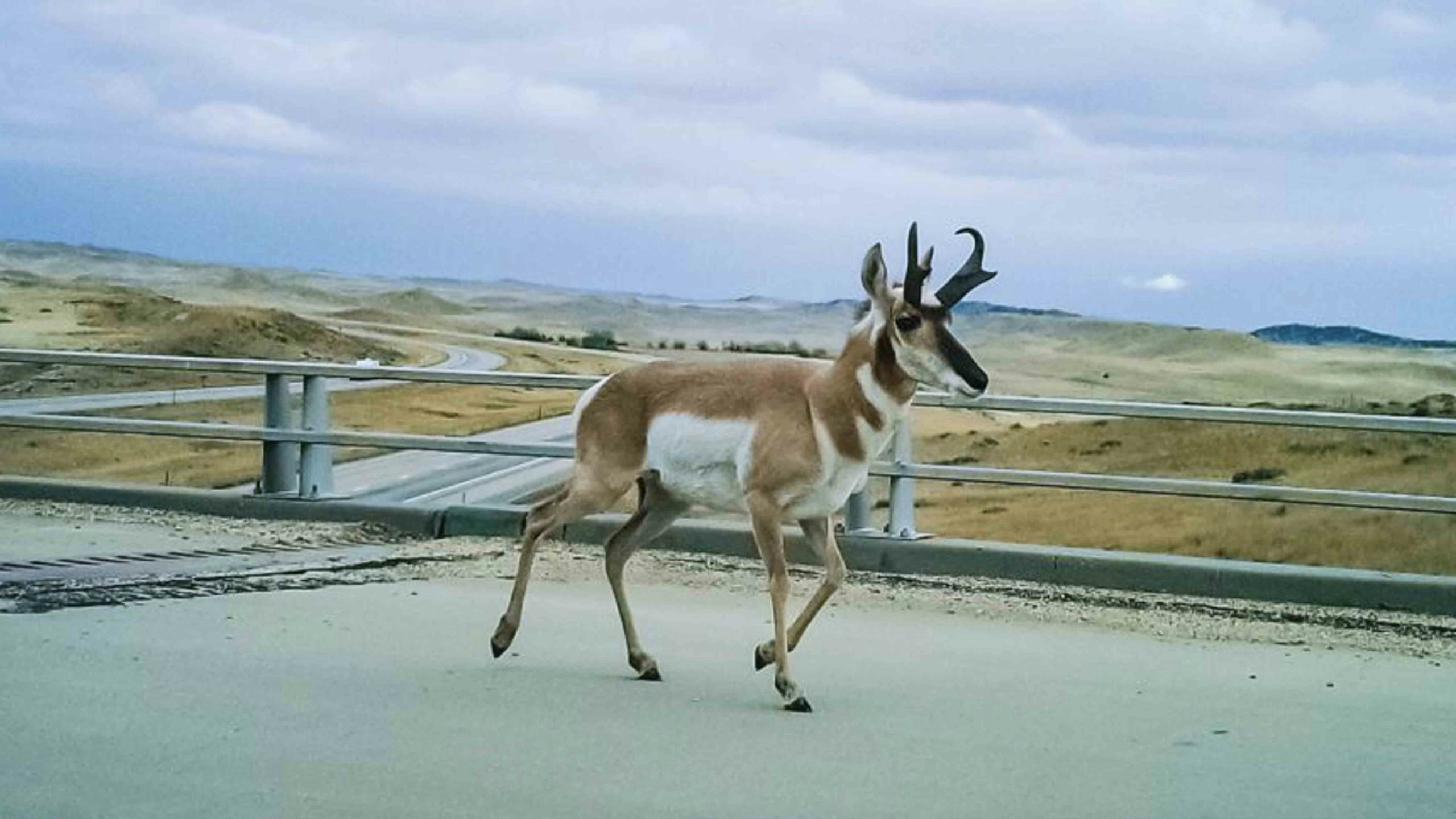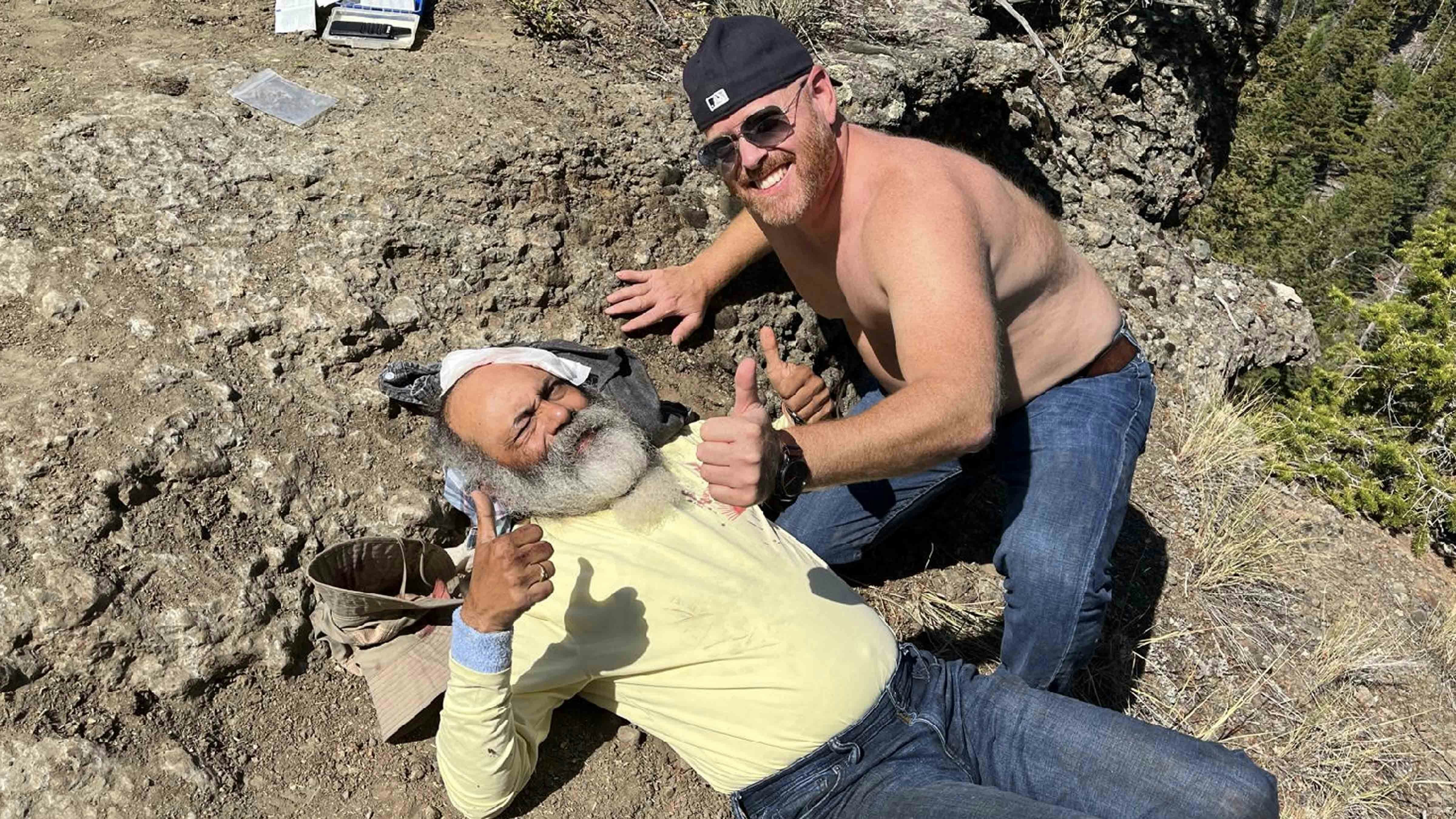A $3.8 million crossing path for Wyoming’s wildlife is being built between Buffalo and Kaycee as part of a statewide master plan to reduce collisions between wildlife and vehicles.
The state Wyoming Department of Transportation and Game and Fish Department are working together to reduce the collisions between wildlife and vehicles that number in the thousands every year, said Luke Reiner, director of WYDOT.
“We all know that when we travel Wyoming roads, we don’t like vehicles to bump into wildlife,” Reiner told Cowboy State Daily. “And it happens way too often – over 6,000 times a year in our state. And that’s just 6,000 times too many.”
This particular wildlife crossing project will use existing underpasses and high fencing on a 15-mile stretch of I-25 to funnel wildlife through to the other side of the interstate, reducing accidents with mule deer and white-tailed deer.
“These deer are essentially using the median of the interstate as habitat,” said Cheyenne Stewart, Sheridan Region wildlife coordinator for the Game and Fish Department. “But because we have these existing underpasses, because it’s not a major migratory area, the idea came that we could just put high fences along the interstate, funnel the animals through the existing underpasses and not have to build overpasses and underpasses, which is a lot more expensive.”
This more affordable option should address the danger and continue to allow some movement by the deer across the interstate, according to Sara DiRienzo, public information officer for the Wyoming Game and Fish Department.
“Any roadway project is really expensive,” said DiRienzo. “But this is considered one of the more affordable ones because it utilizes those existing structures.”
According to data collected by WYDOT in 2018, an average of 1,841 vehicles passed through that 70 mile stretch each day. And an estimated 57 vehicles collide with deer every year as the animals try to cross the interstate at that point.
“So when this project is all in place, we anticipate that it will reduce collisions with wildlife up to 80%,” said DiRienzo. “And that’s really valuable. It saves drivers money, it saves the state money, and of course, saves wildlife lives.”
She pointed out the Buffalo/Kaycee project was given the go-ahead now because of its affordability.
“This one rose to the top of the list,” DiRienzo said, “because not only does it have one of the most high-collision rates with wildlife in our state, but also it’s one of the most easily attainable projects because of the existing structures, and everything that we have learned about the movements of wildlife on that road. So $3.8 million goes a really long way on that stretch.”
Stewart, who moved to Buffalo a few years ago, has personal experience dodging wildlife on that stretch of highway.
“The last bit of stretch from driving anywhere is from Kaycee to Buffalo,” she said. “And it’s the most stressful part of the drive because it’s probably getting dark, and you’re probably a little tired. And you’re seeing deer and you’re just wondering, which is the one that’s going to run out in front of my vehicle?”
Support for the project came from 17 different funding sources, including partners, local government and donations from the public.
“It’s truly a Wyoming success story,” Reiner noted, “of identifying something we really care about – wildlife – pairing it with transportation, which we all have to do – you’ve got to go from point A to point B, but you want to do it as safely as you can – and come up with a solution where everybody participates.”
DiRienzo said the project should go out for bid in February, with a plan for construction to begin in the spring.







